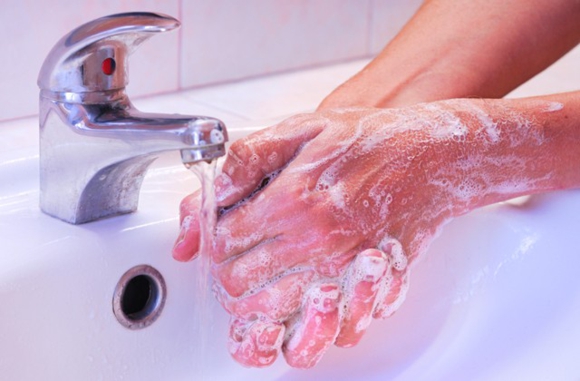<p>People who work in a care environment, such as a hospital, need to follow exacting regulations to control infection. And it has been proven that making sure all employees are comprehensively trained in good hand hygiene can reduce the spread of infection.<br />
This is a quick reference guide which can be used to determine when hands need to be cleansed.<br />
It&#8217;s important for hand cleansing to be performed in the following situations:<br />
o When the hands are visibly dirty<br />
o When the hands have been contaminated<br />
o Before contact with a patient<br />
o When an aseptic task is about to be carried out<br />
o After patient contact<br />
o After contact with patient surroundings, such as their clothes or bedding<br />
o After there may have been a risk of a patient&#8217;s body fluid coming into contact with the hands<br />
In hospital clinical areas it&#8217;s also imperative that a &#8216;naked below the elbow&#8217; policy is put into place.<br />
This ensures that no contamination can be present when working with patients.<br />
<strong>Hand sanitiser</strong><br />
Establishments which cater to patient care are now using hand sanitiser gel which is usually located in hand operated dispensers around the building in areas where it is important to sanitise the hands. The sanitiser gels can be located at ward entrances or exits or in other areas of the building to stop cross-infection between different departments. Hand sanitiser is an excellent product to stop cross-infection but hand sanitiser should never be used to replace normal hand washing. Hands should always be washed when they are visibly dirty or in the situations described above. Hand sanitiser gel should be used to sanitise hands when they are already clean.<br />
<strong>Hand hygiene training</strong><br />
It may seem simple but it&#8217;s amazing how many people in a healthcare environment don&#8217;t wash their hands correctly. Initial hand washing training and regular training updates are required to control infection, but without procedures in place to monitor employee hand washing techniques infection rates can rise<br />
A twelve step hand cleansing technique, discussed below, is usually adopted:<br />
1a. Wet hands thoroughly with water<br />
1b. Apply soap to hands so all surfaces are covered<br />
2. Rub palm to palm<br />
3. Rub back of each hand with palm of the other with fingers interlocked<br />
4. Rub palm to palm with fingers interlocked<br />
5. With fingers interlocked rub backs of fingers, which are pressed against opposing palms<br />
6. Clasp thumb in opposite hand and clean using rotational movements<br />
7. Rubs fingertips into the opposite palm with circular movements<br />
8. Rub each wrist using opposite hand<br />
9. Rinse hands<br />
10. Turn off tap using elbow to stop contamination<br />
11. Dry hands using single use towel<br />
12. Hands are now clean<br />
This article about cleaning supplies was written by George Freeman.</p>

Hand Hygiene Quick Reference Guide
